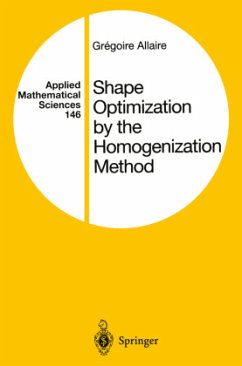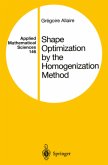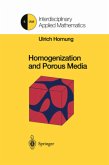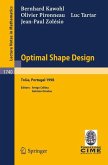This book provides an introduction to the theory and numerical developments of the homogenization method. Its main features are: a comprehensive presentation of homogenization theory; an introduction to the theory of two-phase composite materials;a detailed treatment of structural optimization by using homogenization; a complete discussion of the resulting numerical algorithms with many documented test problems. It will be of interest to researchers, engineers, and advanced graduate students in applied mathematics, mechanical engineering, and structural optimization.
The topic of this book is homogenization theory and its applications to optimal design in the conductivity and elasticity settings. Its purpose is to give a self-contained account of homogenization theory and explain how it applies to solving optimal design problems, from both a theoretical and a numerical point of view. The application of greatest practical interest tar geted by this book is shape and topology optimization in structural design, where this approach is known as the homogenization method. Shape optimization amounts to finding the optimal shape of a domain that, for example, would be of maximal conductivity or rigidity under some specified loading conditions (possibly with a volume or weight constraint). Such a criterion is embodied by an objective function and is computed through the solution of astate equation that is a partial differential equa tion (modeling the conductivity or the elasticity of the structure). Apart from those areas where the loads are applied,the shape boundary is al ways assumed to support Neumann boundary conditions (i. e. , isolating or traction-free conditions). In such a setting, shape optimization has a long history and has been studied by many different methods. There is, therefore, a vast literat ure in this field, and we refer the reader to the following short list of books, and references therein [39], [42], [130], [135], [149], [203], [220], [225], [237], [245], [258].
The topic of this book is homogenization theory and its applications to optimal design in the conductivity and elasticity settings. Its purpose is to give a self-contained account of homogenization theory and explain how it applies to solving optimal design problems, from both a theoretical and a numerical point of view. The application of greatest practical interest tar geted by this book is shape and topology optimization in structural design, where this approach is known as the homogenization method. Shape optimization amounts to finding the optimal shape of a domain that, for example, would be of maximal conductivity or rigidity under some specified loading conditions (possibly with a volume or weight constraint). Such a criterion is embodied by an objective function and is computed through the solution of astate equation that is a partial differential equa tion (modeling the conductivity or the elasticity of the structure). Apart from those areas where the loads are applied,the shape boundary is al ways assumed to support Neumann boundary conditions (i. e. , isolating or traction-free conditions). In such a setting, shape optimization has a long history and has been studied by many different methods. There is, therefore, a vast literat ure in this field, and we refer the reader to the following short list of books, and references therein [39], [42], [130], [135], [149], [203], [220], [225], [237], [245], [258].
From the reviews: "The book is a research monograph, but the structure and completeness of the presentation means that the book constitutes a good basis for a graduate course in applied mathematics. The rigorous mathematical presentation is supplemented with numerous remarks and comments which discuss the subject in broader terms, greatly simplifying the reading process. ... The book is a welcome and up-to-date addition to the literature in the area and it is necessary reading for any researcher and student ..." (M.P. Bendsøe, Structural Multidisciplinary Optimization, 5, 2002) "The book is very well structured, very clearly written, very well motivated, and complete in its treatment of modelling, analysis and simulation. It will be a basic reference for whoever wants to deeply understand homogenization from the point of view of its application to optimal design. The treatment is right to the point, a quality that is very much appreciated by readers. In summary, I believe this text may become a main source for the subject of optimal design and shape optimization." (Pablo Pedregal, Mathematical Reviews, 2002 h) "The book under review presents a comprehensive introduction to the homogenisation method applied to optimal design, including many proofs which were hitherto only scattered throughout the literature ... this one provides the most complete treatment of numerical methods ... A number of realistic examples, mostly for elasticity, has been developed in detail. ... In summary, we would like to warmly recommend this book to anybody working in optimal shape design, composites and homogenisation, as well to those who wish to enter these fields." (Nenad Antonic and Marko Vrdoljak, Zentralblatt MATH, 990:15, 2002)









